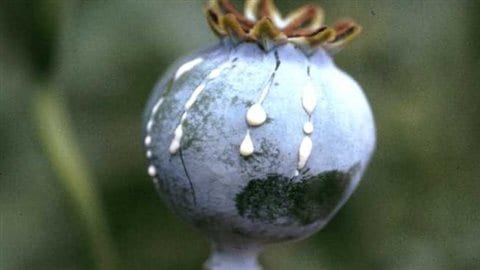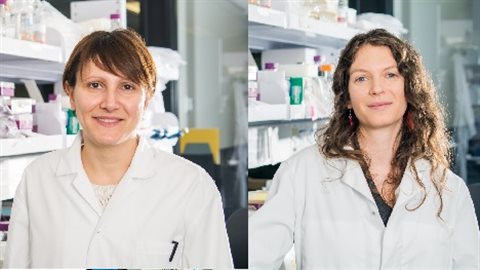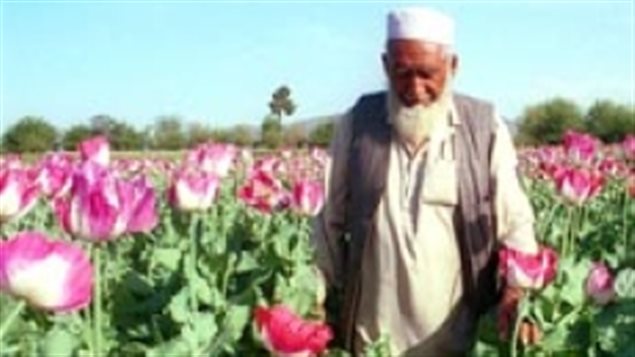Synthetic opium advance-new medicines but also new regulations
Opium poppies are both a scourge and a blessing. Drugs like morphine and codeine, important therapeutic medicines are derived from them, but also illegal narcotics such as heroin.
Now, under carefully controlled conditions, a Canadian research team has managed to create the basis for opiates using a simple yeast. Professor Vincent Martin (PhD) led a research team at Concordia. He is microbiologist and Chair in Microbial Genomics and Engineering.
Listen
The advantages of a simpler way of creating opiates also mean it could in theory also be simpler for criminal elements to also produce opiate drugs locally for the black market.
Thus , even before embarking on their research the team contacted various authorities in both Canada and the US to advise them of the research and developments.
In creating natural opiate drugs, a latex containing several important alkaloids is obtained from immature seed capsules one to three weeks after flowering. Incisions are made in the walls of the green seed pods, and the milky exudation is collected and dried. Opium and the isoquinoline alkaloids morphine, codeine, noscapine, papaverine, and thebaine are isolated from the dried material.

The research effort has since succeeded in artificially creating the basis for the opiates from an engineered yeast. The work was carried out by Martin’s Concordia team in Canada with close collaboration by John Dueber at UC Berkeley in California
The research has been published in two parts in the journals, PLoS One, entitled “Synthesis of Morphinan Alkaloids in Saccharomyces cerevisiae“, and in Nature Chemical Biology entitled “An enzyme-coupled biosensor enables (S)-reticuline production in yeast from glucose”
![Fig 2. Reticuline production and utilization in engineered S. cerevisiae.Biochemical pathway depicting reticuline production and utilization in (a) opium poppy and (b) engineered S. cerevisiae. (c) Immunoblot analysis of recombinant PsSAS (56 kDa) and PsCPR (76 kDa) expression in S. cerevisiae. GAPDH (36 kDa) was used as a loading control. (d) Reticuline production and utilization by strains expressing a recombinant reticuline-producing pathway (strain GCY1086) as well as PsSAS (strain GCY1357), PsBBE (strain GCY1359) or a complete dihydrosanguinarine pathway (strain GCY1125; [4]).](http://img.src.ca/2015/05/21/635x357/150521_k65hh_rci-m-graph_sn635.jpg)
The process involves introducing genetic material from the poppy, beetroot and a soil bacterium into the yeast genome, creating strains that can perform portions of the glucose-to-morphine pathway, while a more recent development converts one form of a critical component riticuline into another form of reticuline which completes the transformation of the yeast into an opiate producer.
Some of the potential advantages for producing drugs from yeast would appear to be ease of production and lower costs, and ability to produce the drugs locally anywhere, although those benefits remain to be proven.
In the meantime, Professor Martin and the scientific community say the effort has raised a new debate in both scientific and regulatory circles about to safely develop and control yeast-derived narcotics.

Meanwhile Professor Martin says work such as this latest development many not result merely in new and potential safer and less costly painkillers, but could lead to a variety of entirely new complex compounds for therapeutic drugs that aren’t found in nature in enough quantity to meet demand.
Co-authors on the Nature Chemical Biology study are Zachary Russ and Andrew Gonzales from UC Berkeley’s Department of Bioengineering and Lauren Narcross from Concordia University’s Department of Biology. Co-authors of the PLoS ONE study are Elena Fossati, Lauren Narcross, Andy Ekins and Jean-Pierre Falgueyret from Concordia University’s Department of Biology.
Funding in Canada comes from Genome Canada, and Genome Quebec.







For reasons beyond our control, and for an undetermined period of time, our comment section is now closed. However, our social networks remain open to your contributions.